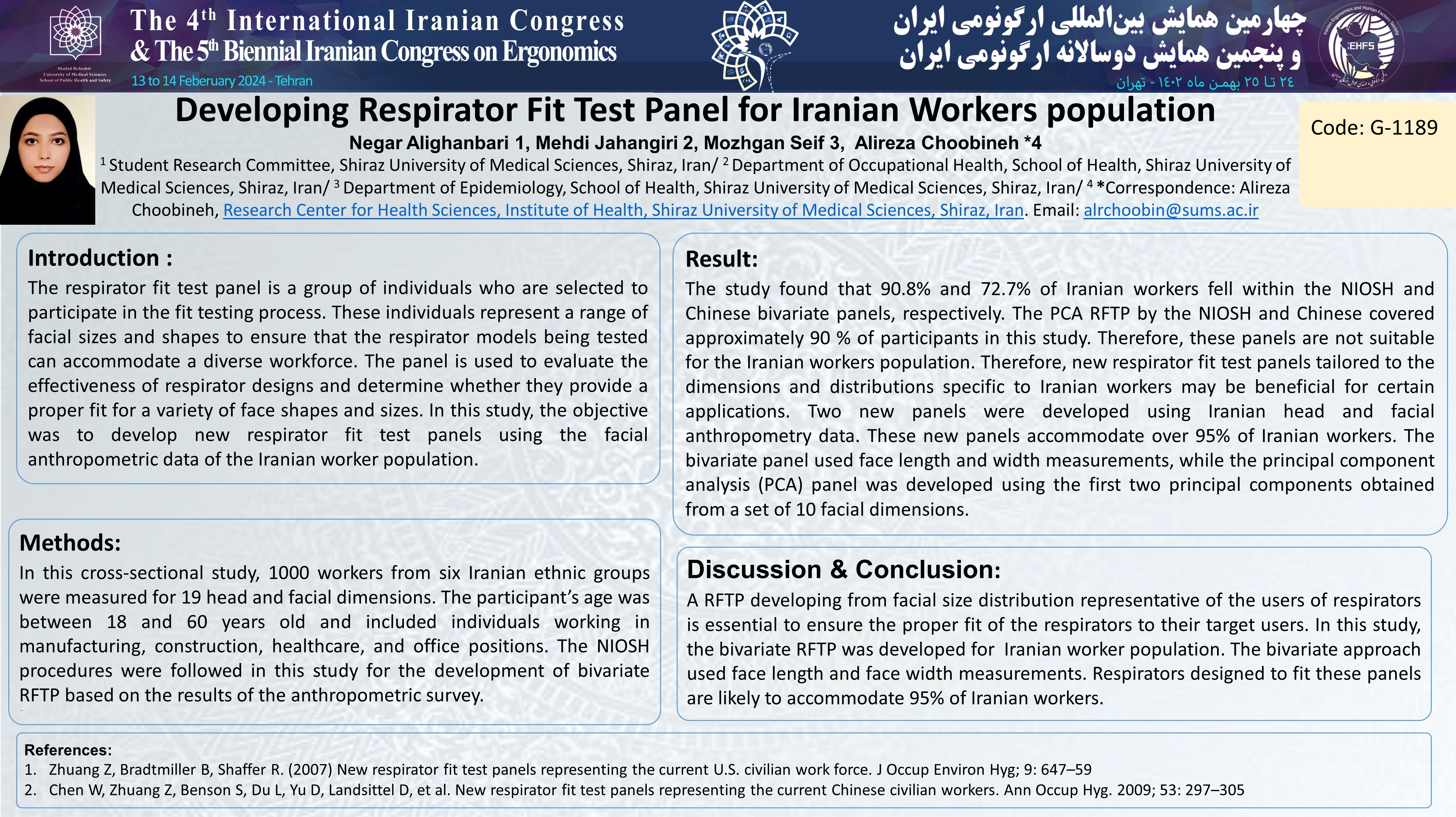Developing Respirator Fit Test Panel for Iranian Workers population
Code: G-1189
Authors: Negar Alighanbari ℗, Mehdi Jahangiri, Mozhgan Seif , Alireza Choobineh ©
Schedule: Not Scheduled!
Download: Download Poster
Abstract:
Introduction
Respirator fit test panel is a group of individuals who are selected to participate in the fit testing process. These individuals represent a range of facial sizes and shapes to ensure that the respirator models being tested can accommodate a diverse workforce. This study aimed to evaluate the applicability of the National Institute for Occupational Safety and Health (NIOSH) and Chinese respirator fit test panels for Iranian workers and to develop new respirator fit test panels using Iran survey data.
Methods and Materials / Case Report
Nineteen head and face dimensions were measured for 1000 participants (female:163, male:837), aged 18–60 years old participated in the survey. The anthropometric measurements were then contrasted with the Chinese and NIOSH fit test panels (Bivariate and Principal component analysis (PCA)), to verify the level of mismatch.
Results
The study found that 90.8% and 72.7% of Iranian workers fell within the NIOSH and Chinese bivariate panels, respectively. The PCA RFTP by the NIOSH and Chinese covered approximately 90 % of participants in this study. Therefore, these panels are not suitable for the Iranian workers population. Also, the distribution of subjects across the panels was not uniform, with only a small percentage falling into specific cells of the panels. Therefore, new respirator fit test panels tailored to the dimensions and distributions specific to Iranian workers may be beneficial for certain applications. Two new panels were developed using Iranian head and facial anthropometry data. These new panels accommodate over 95% of Iranian workers. The bivariate panel used face length and width measurements, while the principal component analysis (PCA) panel was developed using the first two principal components obtained from a set of 10 facial dimensions.
Conclusion
This was the first study to use Iranian head and facial anthropometry data to create bivariate and PCA respirator fit test panels. Respirators constructed using these panels are likely to fit 95% of Iranian Workers population.
Key Words
Anthropometrics Respirator sizing fit test panels Masks
Comments (0)
Post a comment
Post comment is closed by admin.
